Sorting out grammar, syntax, usage, & style
Decoding some elements of the craft
Joan Didion, herself a goddess of good grammar, once wrote, “Grammar is a piano I play by ear, since I seem to have been out of school the year the rules were mentioned. All I know about grammar is its infinite power.” Most of us share that nagging feeling that we missed out on an essential part of school. My language books are intended to sort out some of the cluelessness, but we need to go beyond grammatical questions. Let’s lay down some definitions, so that we can all better understand what is grammar and what it isn’t, then let's look at additional resources.
The confusion starts with the word grammar itself. Many people think grammar dictates where to put commas. (Nope. That’s punctuation, or if you want to go deeper, syntax.) Others think it will tell them when to use affect and when to use effect. (Nope again. That’s usage.) Others think grammar is what makes beautiful writing. (Nope thrice! That’s style.)
Let’s decode these concepts, starting with grammar. I’ll also give you some pointers about where to go to find more on each subject.
GRAMMAR:
CLASSES OF WORDS AND HOW THEY OPERATE IN A LANGUAGE
Grammar is the study of the classes of words (i.e., nouns, verbs, adjectives, adverbs, etc.) and their roles in the sentence; it is also a system of rules about proper use of words in a language.
The idea that there is a grammatically correct way to say things and a grammatically incorrect way comes from this system of rules. But language is a shifty thing, and English is among the shiftiest of languages. Not all grammarians agree on the rules, and some (including me) argue that many of these rules are arbitrary and sometimes even ridiculous.
Two of my books, Sin and Syntax and Vex, Hex, Smash, Smooch, dig deep into grammar. The “Words” section of Sin and Syntax gives you all you need to know about the parts of speech if your true goal is to get better at writing. Vex, Hex, Smash, Smooch approaches sentences through their most important constituent part, the verb.
If you’d like more resources than these two books, head to the Cool Tools section, where I have articles listing grammar books, bookmarks, and bona fide doorstoppers.
SYNTAX:
THE ORDER OF ELEMENTS IN A SENTENCE
Syntax refers to the way in which linguistic elements (such as words) are put together to form phrases, clauses, and sentences.
The etymology of syntax is neat: It comes from the Middle French sintaxe or the Late Latin syntaxis, which comes from the Greek syntassein, meaning to arrange together (syn- means “with” + tassein “to arrange”). So the idea behind syntax is the harmonious arranging of elements into a whole. Think “symphony of words.”
Syntax gives sentences sense, meaning, and clarity. Merriam-Webster’s dictionary tells us that syntax is often discussed in the context of diction—the writer’s vocabulary or choice of words. The two things together, the words chosen and the way they are strung together, give us beauty in poetry and prose. M-W gives an example of an English professor’s discussion of the syntactic difference between a line Robert Frost wrote (“Whose woods these are I think I know”) and the line he might have written (“I bet I know whose land this is”). Frost chose his words carefully in part so that they would rhyme with the following lines, in part to activate feelings generated by certain words.
Syntax is part of linguistics, and there aren’t too many books on it, per se. I chose to use it for the title of my book because, ultimately, I’m less concerned with good grammar and more concerned with beautiful writing.
PUNCTUATION
Punctuation refers to all those little marks in writing that aren’t letters. Punctuation concerns the ins and outs of parentheses, the slips and slides of slashes, the hyperbolic reactions of the language mavens to simple hyphens.
The punctuation princess Karen Elizabeth Gordon defines punctuation playfully: “What is it, after all, but another way of cutting up time, creating or negating relationships, telling words when to take a rest, when to get on with their relentless stories, when to catch their breath?” This is your lucky day, because I’ve put together a brief primer on this confounding subject. My favorite book is Gordon's  The New Well-Tempered Sentence: A Punctuation Handbook for the Innocent, the Eager, and the Doomed.
The New Well-Tempered Sentence: A Punctuation Handbook for the Innocent, the Eager, and the Doomed.
USAGE:
THE HABITS OR PARTICULAR WAY WE DEPLOY WORDS
Certain words used casually may actually have quite particular meanings. Some examples might be decimate, nemesis, and terrorist. One aspect of usage is the idea that there is a dictionary definition of a word and then a colloquial use of it. (For example, decimate contains the Latin decem, or ten, and it originally meant to reduce a regiment by one-tenth, as punishment. It still means to reduce by one-tenth, but it is often used to mean reduce drastically in number or cause great destruction.)
Some word pairs are used interchangeably by writers who don’t know better (affect v. effect; aggravate v. irritate; careen v. career). Usage divas never mix them up. Of course, the way we use words changes over time, so we all rely on usage manuals to help sort out the evolution of, for example, medium v. media; compare to v. compare with; or he/she/it/they.
Usage may differ from one culture to another (when Brits say lorry, Americans say truck) or one subculture to another. (You in New Haven might be youse in New Jersey and y'all in New Orleans.)
Here is an article on books about usage and abusage.
STYLE:
a) THE CONVENTIONS OF A PUBLICATION REGARDING HOW CERTAIN WORDS ARE TREATED AND FORMATTED
b) LITERARY FLAIR
Most writers think that style refers to the way we write, the artistry we bring to words on the page. But in the publishing world, editors and copy editors use the term to refer to the very particular way they treat certain words—putting book titles in italics, say, or using OK rather than okay.
If you intend to write for a certain publication, it may be useful to bone up on the style preferred by that publication. Universities tend to prefer MLA style (codified by the Modern Language Association). Newspapers tend to use AP style (see The Associated Press Stylebook and Briefing on Media Law). Magazine and book publishers usually rely on The Chicago Manual of Style. But some publications follow their own rules. My first book, Wired Style, is a result of the intentionally idiosyncratic style of Wired magazine in the late 1990s.
Good prose writers are secret poets. Those who carefully craft their style use various devices, but we pretend we aren’t doing it. I took a crack myself at defining style in the Epilogue (titled “Got style?”) of Vex, Hex, Smash, Smooch. In general, I like to say that literary stylists use wonderful words, smart syntax, literary devices, and maybe even structure to echo—in powerful but at the same time subtle ways—the meaning that is intended.
I once noodled around for how writers I like defined literary style.  Gore Vidal defined style as “knowing who you are, what you want to say, and not giving a damn.” Poet
Gore Vidal defined style as “knowing who you are, what you want to say, and not giving a damn.” Poet  Robert Frost remarked that “style is the mind skating circles around itself as it moves forward."
Robert Frost remarked that “style is the mind skating circles around itself as it moves forward."
Italian filmmaker  Federico Fellini called it “craftsmanship”:
Federico Fellini called it “craftsmanship”:
What’s really important for a creator isn’t what we vaguely define as inspiration or even what it is we want to say, recall, regret, or rebel against. No, what’s important is the way we say it. Art is all about craftsmanship. Others can interpret craftsmanship as style if they wish. Style is what unites memory or recollection, ideology, sentiment, nostalgia, presentiment, to the way we express all that. It’s not what we say but how we say it that matters.
One of my favorite stylists,  Susan Orlean, sent me her definition:
Susan Orlean, sent me her definition:
I guess I’d say it’s as ineffable and indescribable as someone’s personality, and in fact, I think a writer’s style is linked exactly to personality. It’s the voice of the storyteller, the distinct tone and tenor of how a writer “talks.” I think of it as a genuine and organic expression of the writer’s way of looking at the world.
Are you dizzy yet? The journalist Katy Butler emailed me that the “literary style” she worships is compelling and transparent:
If style is the window through which I see the story, I don’t want the window drawing attention to itself, covered with filigree or etching. I want to see the characters in the scene, and be absorbed in the writer’s thoughts. So I don’t like unnecessarily fancy words or over-clever thoughts. On the other hand, I work for hours on the opening of a piece to get it right. I don’t want any dirt or lumps on that window. I scan the sentences, as if they were poetry, because what trips the tongue will trip the eye, and beautiful rhythm will please and reassure the reader without her knowing it. You want the reader to know she’s in good hands. I omit unnecessary words and details. I trust my irrational mind or heart when it insists on including a detail whose significance I don’t understand.
I like style that is pared-down, and yet beautiful. Metaphors and similes exist, but are sparely used. More is implied than stated. There’s rhythm, alliteration, choice of “kitchen table” Anglo-Saxon words rather than multisyllabic Latinate language. On the other hand, I love Virginia Woolf, and her language is often complex. But the language never overwhelms the images. I am carried on a stream.
—Constance Hale
| |
Share This:






